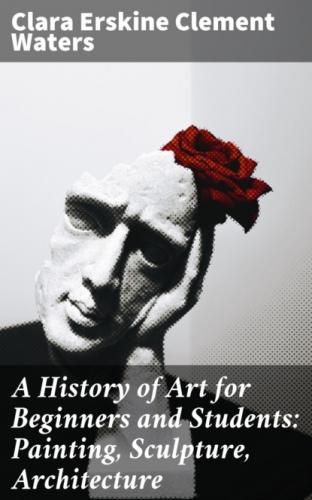But Giovanni Bellini was the greatest of his family, and must stand as the founder of true Venetian painting. His works may be divided into two periods, those that were done before, and those after he learned the use of oil colors. His masterpieces, which can still be seen in the Academy and the churches of Venice, were painted after he was sixty-five years old. The works of Giovanni Bellini are numerous in Venice, and are also seen in the principal galleries of Europe. He did not paint a great variety of subjects, neither was his imagination very poetical, but there was a moral beauty in his figures; he seems to have made humanity as elevated as it can be, and to have stopped just on the line which separates earthly excellence from the heavenly. He often painted the single figure of Christ, of which Lübke says: “By grand nobleness of expression, solemn bearing, and an excellent arrangement of the drapery, he reached a dignity which has rarely been surpassed.” Near the close of his life he painted a few subjects which represent gay and festive scenes, and are more youthful in spirit than the works of his earlier years. The two brothers were buried side by side, in the Church of SS. Giovanni e Paolo, in Venice.
There were also good painters in Padua, Ferrara, and Verona in the fifteenth century.
Andrea Mantegna, of Padua (1430–1506), was a very important artist. He spent the best part of his life in the service of the Duke of Mantua; but his influence was felt in all Italy, for his marriage with the daughter of Jacopo Bellini brought him into relations with many artists. His services were sought by various sovereigns, whose offers he refused until Pope Innocent VIII. summoned him to Rome to paint a chapel in the Vatican. After two years there he returned to Mantua, where he died. His pictures are in all large collections; his finest works are madonnas at the Louvre, Paris, and in the Church of St. Zeno at Verona. Mantegna was a fine engraver also, and his plates are now very valuable.
In the Umbrian school Pietro Perugino (1446–1524) was a notable painter; he was important on account of his own work, and because he was the master of the great Raphael. His pictures were simple and devout in their spirit, and brilliant in color; in fact, he is considered as the founder of the style which Raphael perfected. His works are in the principal galleries of Europe, and he had many followers of whom we have not space to speak.
Francisco Francia (1450–1518) was the founder of the school of Bologna. His true name was Francisco di Marco Raibolini, and he was a goldsmith of repute before he was a painter. He was also master of the mint to the Bentivoglio and to Pope Julius II. at Bologna. It is not possible to say when he began to paint; but his earliest known work is dated 1490 or 1494, and is in the Gallery of Bologna. His pictures resemble those of Perugino and Raphael, and it is said that he died of sorrow because he felt himself so inferior to the great painter of Urbino. Raphael sent his St. Cecilia to Francia, and asked him to care for it and see it hung in its place; he did so, but did not live long after this. It is well known that these two masters were good friends and corresponded, but it is not certain that they ever met. Francia’s pictures are numerous; his portraits are excellent. Many of his works are still in Bologna.
Конец ознакомительного фрагмента.
Текст предоставлен ООО «ЛитРес».
Прочитайте эту книгу целиком, купив полную легальную версию на ЛитРес.
Безопасно оплатить книгу можно банковской картой Visa, MasterCard, Maestro, со счета мобильного телефона, с платежного терминала, в салоне МТС или Связной, через PayPal, WebMoney, Яндекс.Деньги, QIWI Кошелек, бонусными картами или другим удобным Вам способом.
